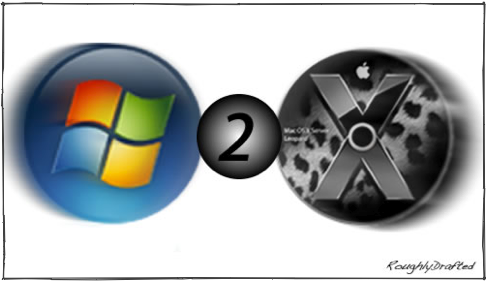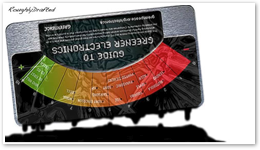
Leopard vs Vista 2: The Indirect Choice
It's tricky to directly compare Apple's Mac OS X Leopard and Microsoft's Vista, because the two products will be sold to very different markets in different ways. Here's a look at how both differ as products in the marketplace.
The Indirect Choice
Apple is strongest where Microsoft is weakest, and vice versa. Despite the intense interest in pitting Apple against Microsoft, Leopard and Vista simply aren't direct competitors.
Part of the reason for this is that Apple is only making Leopard available for users of its own Mac hardware, while Vista runs on a wider range of PCs than Apple even ships, including of course, all of Apple's Intel Macs.
Anyone interested in a tablet, an ultra compact laptop, or a $299 PC simply can't choose Leopard, because Apple doesn't make Mac versions of any of those products.
Door Three?
Similarly, the vast majority of high volume office fleet PCs purchased by the Enterprise won't be deciding between Leopard and Vista, but rather between sticking with Windows XP for the time being or rapidly rolling out support for the new Vista.
Of course, there are also wide markets uninterested in both: a majority of the installed base of Windows PCs lacks the ability to run either Vista or Leopard, and a small but growing segment of desktop market is only interested in one of the several Linux distributions or other free and open source alternatives.
There really won't be anyone trying to decide between buying Vista and buying Leopard. Instead, the real choice will be whether to buy new Mac hardware than can run both, or PC hardware than can only run Windows.
The Problem of Macs Running Windows
That choice is something Microsoft does not like to talk about; when asked about selling Windows on Macs, Microsoft executives evade the question and say that they prefer to think about "real PCs." Why would they turn down potential sales?
If Microsoft's decision makers were confident about Windows as a product, they'd be ecstatic to sell additional copies to Mac users. After all, the company makes far more profit selling individual Windows retail boxes at $299 or more than it does on the individual volume OEM licenses that ship with new PCs; OEM licenses can be as little as $25.
The problem for Microsoft is that every PC user who moves to the Mac suddenly has the choice to stop using Windows all together.
The Shoe on the other Foot
That turns the tables on Microsoft, putting the company in the uphill battle position of its 1990's competitors, who struggled to sell their alternative OS to users who already had Windows pre-installed on their PC.
Every new Mac sold will give Microsoft a taste of the bitter struggle of DR-DOS, OS/2, NeXTSTEP, BeOS, Linux, and every other would-be contender that suffered from a market distorted by the Windows Price Paradox.
That's a big problem for Microsoft: while the new Macs can run Windows, unlike other PCs they don't have to run Windows. Microsoft will be forced to actually sell Windows to Mac users, rather than just signing an agreement with a manufacturer that results in the effortless, ongoing, automatic OEM sales which contribute 80% of Microsoft’s Client (Windows) business division revenues.
This Series










Thursday, November 16, 2006


 Bookmark on Del.icio.us
Bookmark on Del.icio.us Discuss on Reddit
Discuss on Reddit Critically review on NewsTrust
Critically review on NewsTrust Forward to Friends
Forward to Friends
 Get RSS Feed
Get RSS Feed Download RSS Widget
Download RSS Widget





